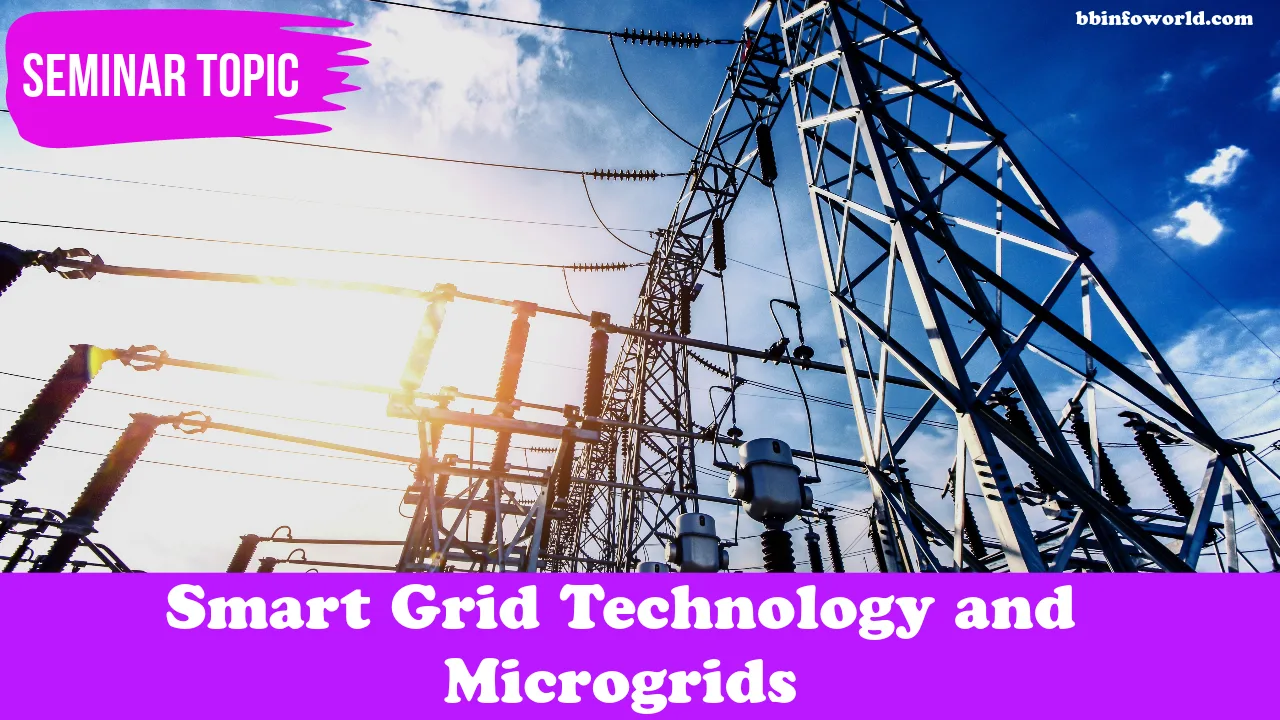
Smart Grid Technology and Microgrids
Study the integration of advanced communication and control technologies into power grids to enhance efficiency, reliability, and the integration of renewable energy sources. Investigate microgrids for localized energy distribution.
Smart Grid Technology and Microgrids:
Introduction:
The modern power grid is undergoing a transformation, driven by technological advancements and the need for more sustainable and reliable energy systems. Smart grid technology and microgrids are two innovative concepts at the forefront of this transformation. They aim to improve the efficiency, reliability, and sustainability of power distribution and consumption.
Smart Grid Technology:
- Enhanced Communication and Control: Smart grids utilize advanced communication and control technologies to create a two-way flow of information between power providers and consumers. This enables real-time monitoring, control, and optimization of electricity generation, distribution, and consumption.
- Renewable Energy Integration: Smart grids facilitate the integration of renewable energy sources, such as solar panels and wind turbines, into the grid. These sources provide clean energy but are intermittent. Smart grid technology helps manage and balance the fluctuations in supply and demand.
- Distributed Energy Resources (DERs): DERs, including solar panels, battery storage, and electric vehicles, play a significant role in a smart grid. These resources can feed excess energy back into the grid or store it for later use, contributing to grid stability.
- Demand Response: Smart grids enable demand response programs, where consumers can adjust their energy usage based on real-time pricing signals. This helps reduce peak demand, lower energy costs, and improve overall grid efficiency.
- Predictive Maintenance: By analyzing data from sensors and devices, smart grids enable predictive maintenance of grid infrastructure. This minimizes downtime and reduces the likelihood of power outages.
Microgrids:
- Definition and Components: A microgrid is a localized energy system that can operate independently or in conjunction with the main grid. It consists of distributed energy resources (such as solar panels and batteries), local loads, and advanced control systems.
- Resilience and Reliability: Microgrids enhance grid resilience by providing a localized source of power during grid outages or emergencies. They can disconnect from the main grid and operate autonomously, ensuring critical facilities have continuous power.
- Integration with Smart Grids: Microgrids can be integrated into larger smart grid systems. They can operate in island mode or interact with the main grid to balance energy supply and demand effectively.
- Localized Energy Distribution: Microgrids are particularly useful in remote areas or communities where establishing a connection to the main grid is challenging. They enable localized energy production, consumption, and storage.
- Renewable Energy Utilization: Microgrids often rely on renewable energy sources, reducing dependence on fossil fuels and minimizing environmental impact.
Investigation and Research:
Research in this area involves:
- Communication Protocols: Developing efficient communication protocols to ensure seamless data exchange between various components of the grid.
- Control Algorithms: Designing advanced control algorithms that optimize energy flow, prioritize loads, and manage energy storage.
- Energy Management Systems: Creating sophisticated energy management systems that coordinate the operation of microgrids and their integration with the main grid.
- Cybersecurity: Ensuring the security of data and communication within smart grids and microgrids to prevent cyberattacks.
Benefits:
Smart grid technology and microgrids offer numerous benefits, including increased grid resilience, reduced greenhouse gas emissions, enhanced energy efficiency, and improved reliability.
Conclusion:
Smart grid technology and microgrids represent innovative solutions for transforming the power grid into a more efficient, resilient, and sustainable system. By integrating advanced communication and control technologies and exploring microgrids for localized energy distribution, we can create a more reliable and environmentally friendly energy infrastructure.



